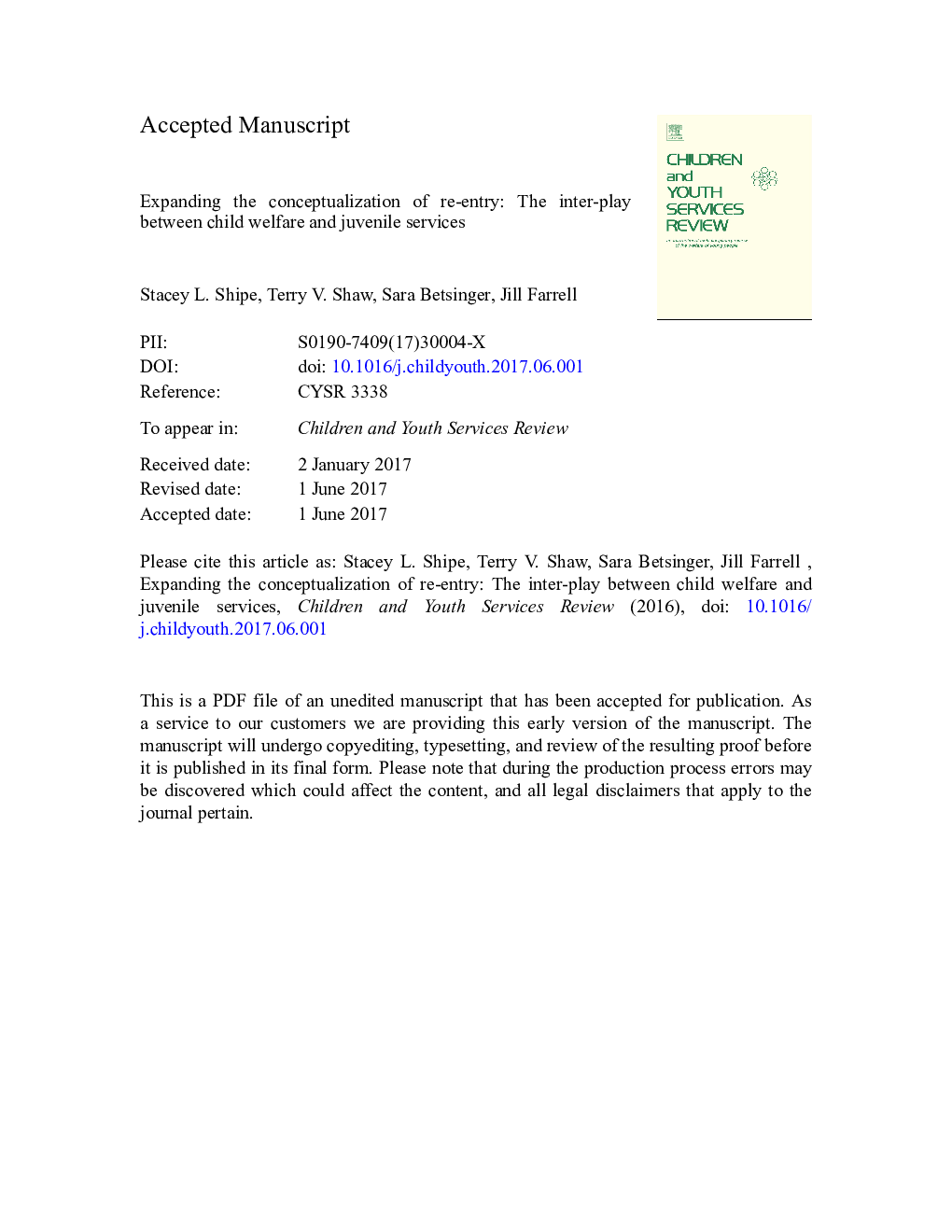| Article ID | Journal | Published Year | Pages | File Type |
|---|---|---|---|---|
| 4936364 | Children and Youth Services Review | 2017 | 31 Pages |
Abstract
Re-entry in child welfare is traditionally viewed as a child exiting to permanency and then reentering the child welfare system. Using this approach is effective for understanding child welfare practice from a single-system lens, but gives an incomplete picture of how children may move between related child serving systems. The present study expands the definition of re-entry by examining re-entry for 2259 children who either return to the child welfare system or move into the juvenile justice system after reunification from foster care. When measuring a broader concept of re-entry (into either system) the rate of re-entry went from 18% to 25% - a 33% increase. Regression analyses further suggested that many of the risk and protective factors associated with standard child welfare reentry were also predictive of multisystem re-entry such as having previous child welfare experience (OR = 1.79, p < 0.000), and child behavior as a factor at removal (OR = 1.75, p < 0.000). Findings of this study support the need to continue increasing the conceptualization of re-entry to be more inclusive of related systems as well as continuing to focus research efforts on understanding effective practices within child serving systems so that re-entry into either system is mitigated.
Keywords
Related Topics
Health Sciences
Medicine and Dentistry
Perinatology, Pediatrics and Child Health
Authors
Stacey L. Shipe, Terry V. Shaw, Sara Betsinger, Jill L. Farrell,
